3 X 5 Lesson Learned Finals Tumblr Funny Cheat Sheet
It is October and autumn has officially hit. I am just beginning to come to terms with the fact that days are getting shorter and warm days are saying their goodbyes. Well, welcome autumn! I am all here for you!
Let's kick it off this new season with a vocabulary revision activity that aims at reinforcing vocabulary while at the same time providing an opportunity for students to stretch their legs and interact with other students in the classroom. Gallery-walks, my favourite!
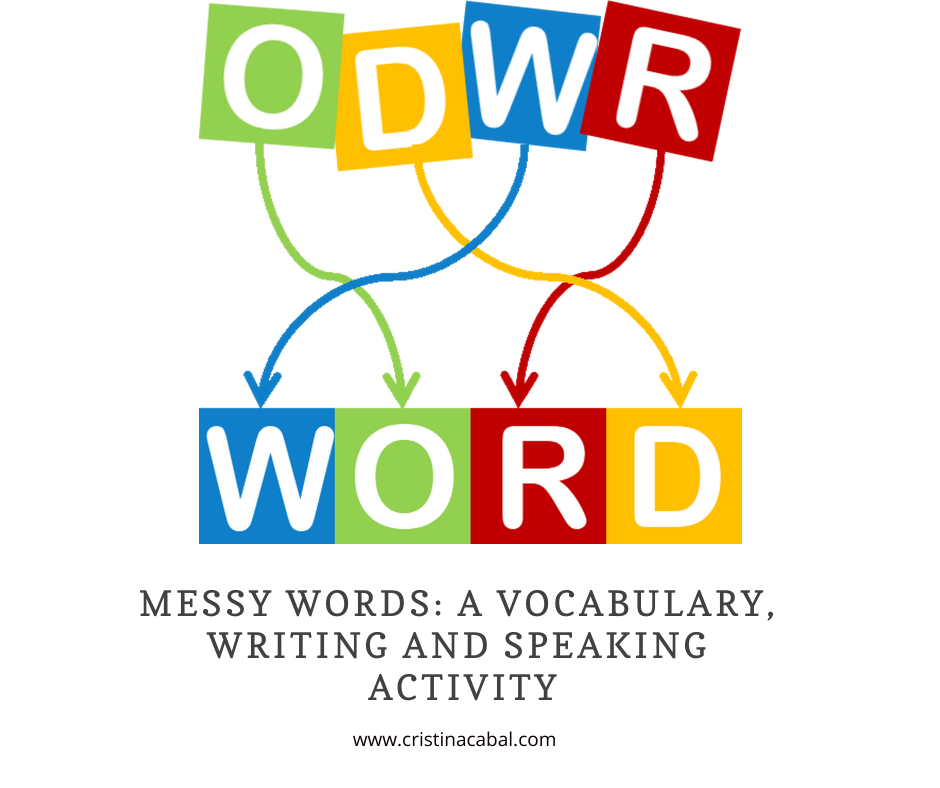
![]()
![]()
![]()
![]()
![]()
![]()
![]()
Aim:
- to reinforce the vocabulary of the lesson
- Use the vocabulary in context by
- writing an open-ended question containing the target word/expression
- answering the question by using the gallery-walk class dynamics
Procedure:
Before the class
- Choose a few words you want to revise. I suggest 8-10 words.
- Fold a regular sheet of paper horizontally and cut it in half. You will get two slips of paper. This is a good opportunity to recycle the back of spare photocopies from other courses.
- Write the letters of each word/expression you want to revise in random order. Number each of the slips of paper for easier reference.
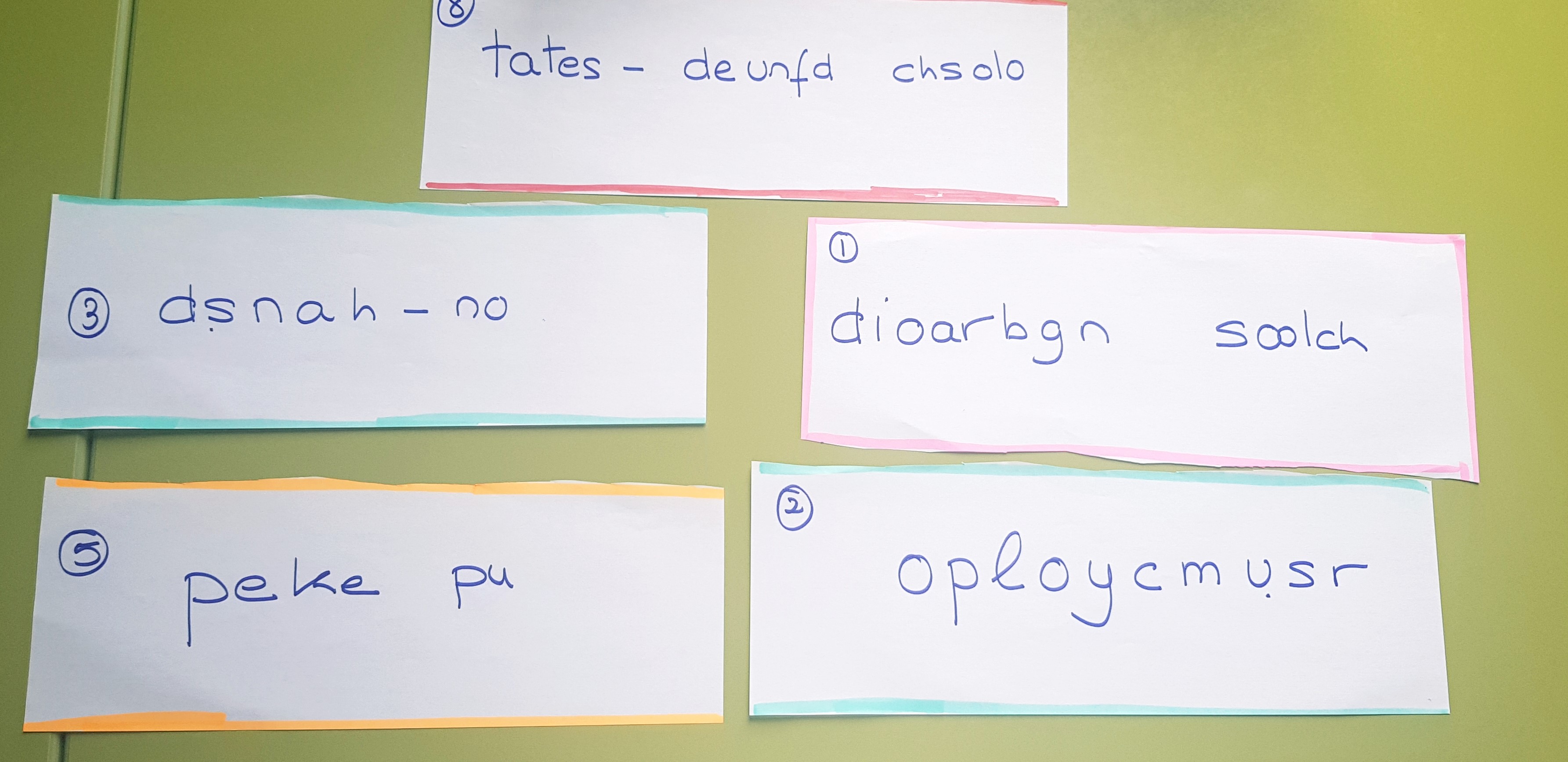
During the class:
Step 1. Slips of paper on the walls
Put up the slips of paper on the walls of the class and ask students in pairs or in threes to stand up and work out what the hidden word on each slip of paper is. Ask them to number them as displayed on the walls. The first pair to have all the words, rings the bell (needless to say, there should be one on my table) and the rest of the class has one extra minute to finish this part.
Ask students to sit down.
Step 2. Writing open-ended questions
- Students continue working in their pairs. Assign the pairs two of the words/expressions on the walls and ask them to write twoopen-ended questions –one per term– related to "education" (this is the topic this week) containing the word or expression.
For example, one of the words was "state-funded school" and one of the questions was "Would you send your children to a state-funded school? Why (not)?"
- Give them small cards to write their questions and, using sellotape, place them next to the term the question refers to. Ask them to write their names at the back of the card so that you know who has written the question and to give feedback.
- Quickly correct the questions on the walls, and if there is more than one per word, choose the best one, which will remain displayed together with the slip containing the word in random order. Give the discarded questions back to their owners and allow them some time to focus on their possible mistakes.
Step 3. Speaking. Gallery walks
With the words and the questions displayed on the walls, ask students in pairs to stand up and choose a station (slip+card).
Instruct them to answer the question elaborating on the answer. Allow 5 minutes/station and then ask them to move clockwise to the next station. Repeat procedure.

Until next post! 🙂
Related posts:
End of the school year for me! And for you?
This is a post especially dedicated to all non-tech lovers! I am capping off this wonderful school year with an engaging yet effective activity for error correction. It may not be much when you read how to do it but trust me on this one, your students are going to love it!
If you follow me at all on my blog or on social media (facebook, twitter ), you will know that I am a huge fan of using technology in my classes. When I mean "huge", I don't mean that technology dominates my teaching practice. I use technology only when I think it's going to contribute to effective learning. Otherwise, it's time wasted.

Slips of paper are hands-down my favourite teaching tool. Essentially, they are scraps of paper that I use and reuse constantly in various ways. In fact, my record is having used the same set of slips of paper six times for a single class. I am sure some of my students will remember this day. They certainly learned everything on them.
The activity I am sharing with you today is a brand new one. I have to say I am happy with the result. It worked really well, it was effective, meaningful and engaging.
This time slips of paper have been used to fix fossilized grammar and spelling errors, but I firmly believe that the use of slips of paper as a teaching tool is a great addition to any lesson plan.
Note 1: "fossilization" refers the way in which some errors become a permanent feature of a language learner's language
Note 2: at the end of the post, there is a video I've put together with some pics and clips I took from the activity. In case you want to see it. Just saying! 🙂
Materials:
- slips of paper
- sticky notes
- sellotape or blue-tack
Before the class Yes. I am afraid there is some prep to do but it's worth it.
- Correct their compositions and write down common or relevant errors: for this activity, I have used common spelling or grammar errors.
- Write them down on slips of paper.
- Write the correction on sticky notes or scraps of paper.
- Hang the slips of papers around the room. Identify each slip of paper with a number and write it down on the bottom right-hand corner.
- For each slip of paper, and displayed next to it, is a sticky note containing the correction. The sticky note is folded in half so that the right answer cannot be seen unless unfolded.
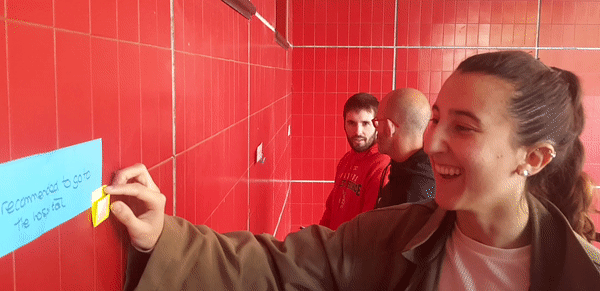
How to go about it Round 1
- Ask students to take out a regular A4 piece of paper, write Round 1 at the top and number it- whatever X slips of paper you are using. Ask them to do the same on another piece of paper and but this time they should write Round 2.
- Note: It is spring so if it is sunny, why not take them outside the building and hang the slips of paper on the walls of the building? In fact, this is what I did. If you also play some upbeat music while they are doing the exercise, they are going to love you.
- Ask them to form pairs.
- Ask them to walk around the class in their pairs, read the sentence, spot the error, discuss the way to correct it and then write their answers on the response sheet. If the number on the slip of paper is 3, they should write it next to number three on their response sheet. Tell them it doesn't matter where they start as they will end up doing all the cards.
- Emphasize that they will need to speak English all the time and that they will both need to discuss how to correct the error- you want both of them to learn, not just one student- then write down the answer and then, only then, unfold the sticky note with the corrected version.
- I like to meander around the room and check to see if they are having difficulties with a specific error and try to help them figure out where the mistake is.
- Once the activity is finished, I ask them to count up the number of mistakes they have been able to correct and write that number at the top of their paper.
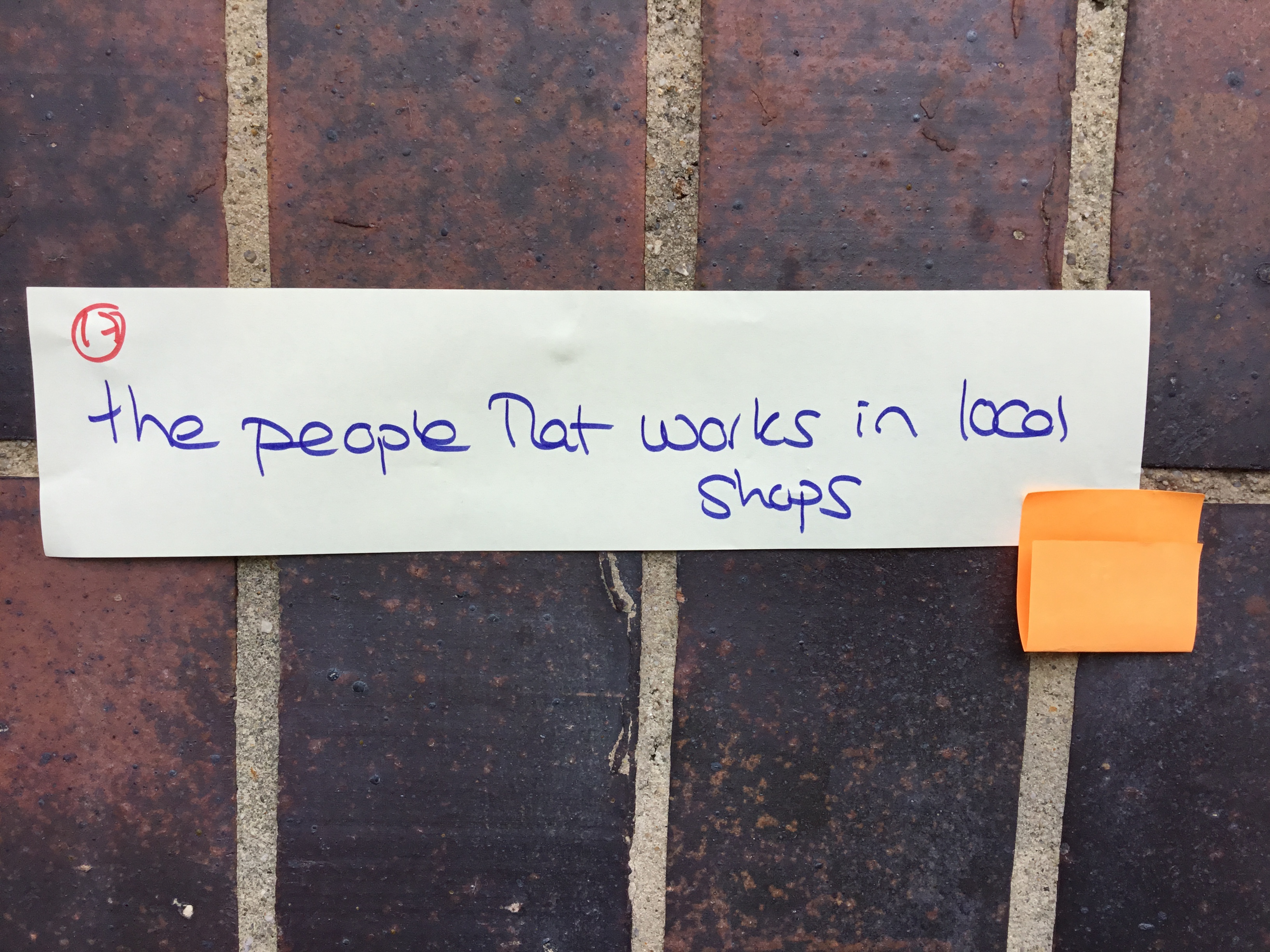
Round 2.
We are working here with fossilized errors, ie, errors we have already corrected a thousand times but we haven't been able to fix. Reinforcement and consolidation are essential. So, let's go for Round 2.
Group students: I asked students to form a line based on their birthdays (day/month). Once they formed the line, I ask them to work with the person on their right. (have a look at the video).
- Explain that they are going to be competing against each other. At the end of the activity, the winner is the student who has managed to correct the most mistakes.
- Everything is the same as above, but this time they don't discuss the error. Together and silently they read the error on the slip of paper, write the correction on their sheets of paper, compare their answers, unfold the sticky note and put a tick or a cross depending on whether they have been able to spot and correct the error. Hopefully, most students will have been able to fix all the errors.
Round 3
Yes. Again. Remember they are fossilized errors.
Follow-up: Ask students to sit down and ask them to write from memory all the mistakes they have been able to fix. Once they have finished, ask them to share them in pairs. Let's hope that by writing them down from memory and talking about them in pairs …again, we will have helped them eliminate these fossilized errors from their oral and written production.
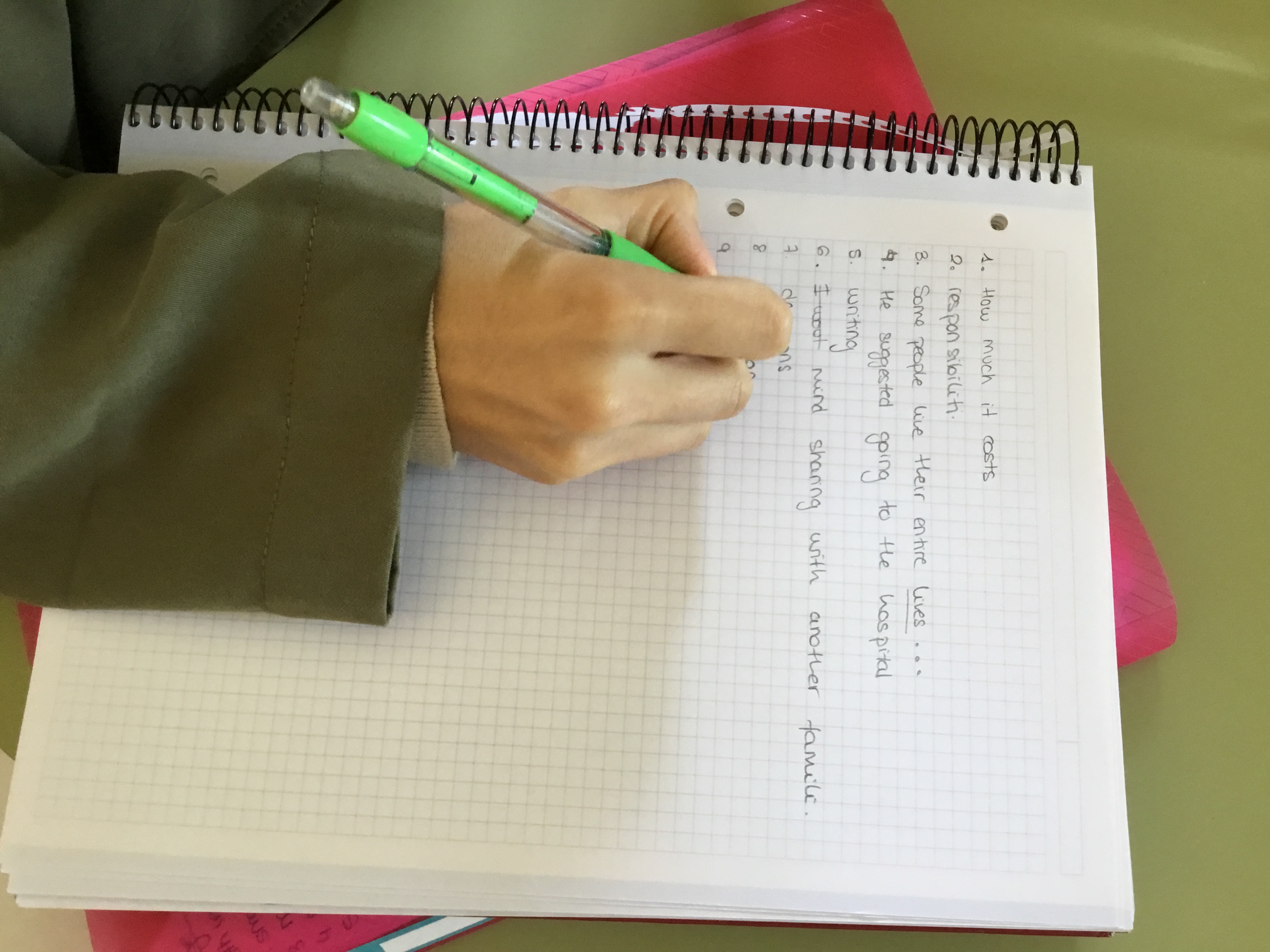
I love how slips of papers can turn into a simple and fun formative assessment tool that gets students out of their seats and learning, don't you?
Have a look at the video now to have a clearer picture of the whole activity.
Related posts:
Naturally, I am a huge supporter of any activity that involves students getting out of their seats and interacting with other students. Also, if you have been reading me for a while, you will surely know that I am always worried about making vocabulary stick.
So, this super simple activity combines these two things+ zero preparation. How does that sound? Yes, I know. Besides, it's compatible with any topic you are working with. Believe me, this activity is a hit.
There is a 99% chance that you will end up participating in the activity, but please, do not get all proper and spoil the fun by telling students to keep their voices down. Let them enjoy.

Aim: to make vocabulary stick by revising, reinforcing and using it.
Topic: Any. I was working with the theme of environment, but any topic would do
Level: Any.
How to go about it
Revising.
1. Revision with slips of paper. Start by revising the vocabulary you have introduced in previous lessons. I usually write the vocabulary I need to revise on slips of paper, place myself in the middle of the classroom (desks are arranged in a U shape) and very quickly give a short definition, synonym or antonym. The student who guesses correctly gets the slip of card. The winner, as you might have guessed, is the student who has more cards at the end of this activity. I do this activity very often. I think I like it because I can see that my students love it and it is a good exercise not only to revise meanings but also to work on pronunciation.
Writing.
2. Writing 5 newly- acquired words. Ask students to write on a small scrap of paper 5 words they have learned. If they have learned "make the most of" for example, encourage them to write the whole expression and not just "make the most ".

Speaking
3. On the board, write a question for the students to discuss in pairs.
4. Tell the students to stand up with the scrap of paper containing their words and choose a partner to talk to. They can sit down if they want to or they can remain standing.
5. Ask them to swap the pieces of papers and read the 5 words on it making sure they know what they mean. If they don't, they should ask their partner to explain or clarify meanings
6. Point to the question on the board and ask them to discuss it trying to introduce as many words as possible from their list of words. Allow 4 or 5 minutes to discuss this question.
7. Important step: Ask students to swap lists again before asking them to stand up and find a new partner.
8. Write a new question for discussion on the board. Ask students to sit down with their new partner, swap the scraps of paper and repeat procedure.
My students said they loved the game! Let me know what your students think if you decide to give it a go.
Follow us on Facebook and on Twitter
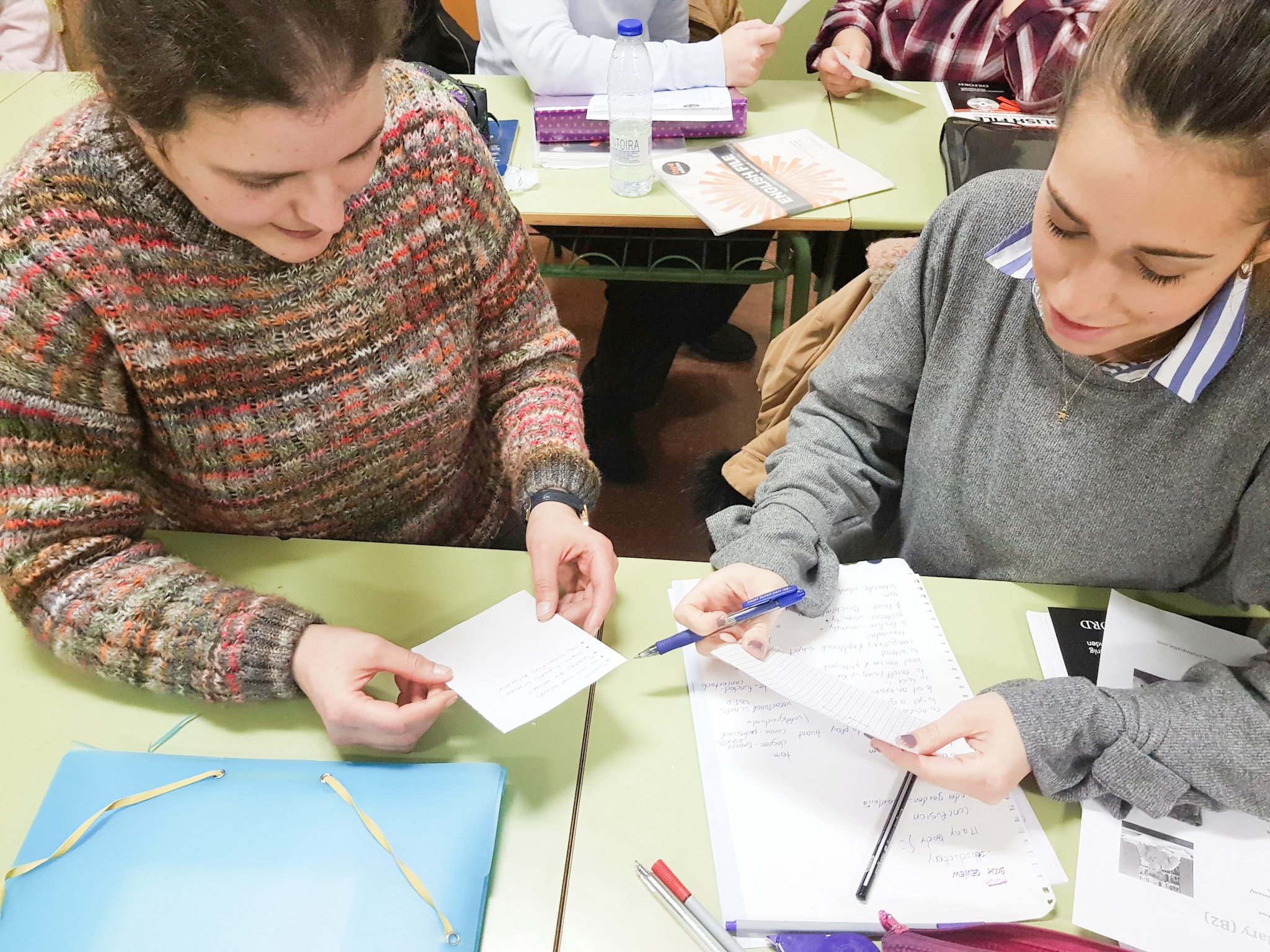
Related posts:
I am almost embarrassed to share this super easy lesson plan with you, but right now I am in the middle of a love affair with collocations and all my classes, no matter the level, are working with collocations.
Please, don't freak out! I am not going to give you an obnoxious list of collocations and ask you to learn them by heart. That's not the way I do things!, but you'll surely agree with me that there is no point in learning the adjective "interested" if you don't know that it's followed by the preposition "in". Yes, Ok, you can say "I'm interested", but that's it!! And we are aiming for a bit more, aren't we?
(at the end of this post, you'll find some interesting links to learn more about collocations)
So, take a deep breath and follow me!

Step 1. What is a collocation? Though students don't really need to be familiar with the term, it might be a good idea to introduce the concept.
In English we can say I absolutely agree but we cannot say I absolutely go; we can say I am interested in, but not I am keen in. We can say a heavy drinker, but not a strong drinker or achain drinker. These conventional combinations of words, chosen naturally by the English speakers to express an idea, are called "collocations".
Below you'll see some of the collocations I am going to use, but this activity will work with any collocation:
Depend on/ interested in/ arrive in/ arrive at/ fed up with/ spend on/good or bad at/ close to/fond of/keen on/ look forward to…etc.
Step 2. Slips of paper. Oral activity.
- Select the collocations to be studied, as many as students you have in the class. In my case, I have decided to give them dependent prepositions with common adjectives and verbs because I have noticed they always make mistakes here.
- Write the adjective or verb on the slip of paper and on the back of it, the preposition(s) it collocates with. Stand up in the middle of the class for everybody to see you. Show students the slip of paper containing the adjective or verb and ask them to guess the missing preposition, and then give you a sentence containing the collocation.
- A small competition. Divide the class into two groups and repeat procedure. This time, groups will need to guess the preposition and give a sentence -different from the one they gave in the previous stage- to win the point.
Step 3. Slips of paper. Writing activity.
- Give every student a slip of paper from the previous activity and ask them to individually think of a question to ask their partners containing this collocation.
Offer help if necessary.
Step 4. Speaking activity using the speed-dating technique.
Students sit facing each other. Some students will remain seated during the whole event (in real speed dating, women remain seated). They have 4 minutes to talk asking and answering the question they have written containing the collocation. Then, a bell rings and "men" need to stand up and move to their right to start a new conversation and the whole process is repeated again. I didn't have a bell so I used a Class Timer (here).
A highly engaging activity your students are likely to enjoy!
Useful links to learn more about collocations
- arrive at/in
- dream of/about
- Made of/from/by
- Think of/on/about/in
- at the end/in the end
- Ozdic.com Collocations dictionary
Blog de Cristina is also on Facebook. Follow us!
Thanks for reading!
Related posts:
Source: https://www.cristinacabal.com/?tag=slips-of-paper
0 Response to "3 X 5 Lesson Learned Finals Tumblr Funny Cheat Sheet"
Post a Comment